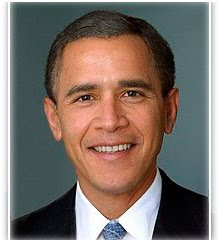When
the Obama administration announced July 2 that it would give a breather
to employers affected by the Affordable Care Act (ACA), angry unionists
noticed a pattern.
Even before this delay, “every corporate interest that’s asked for
regulatory relief has gotten it,” said Mark Dudzic, chair of the
Labor Campaign for Single Payer, “but the concerns of union plans have been overridden.”
The requirement that employers provide health insurance or pay a fine will be postponed till January 2015 or later.
“Looks like ordinary workers will be forced to pay for health
insurance on the original schedule [starting January 2014], while big
business is off the hook for at least a year,” said Chris Townsend,
political director of the United Electrical Workers (UE).
Justifying the delay, the Obama administration cited employers’
difficulties in reporting employee hours worked, pay, and their
insurance offerings—all information needed to calculate whether a fine
is due for not offering adequate insurance.
The Walmart Loophole
Some states are trying to patch up problems with Obamacare before it
hits. California union groups are campaigning to eliminate the “Walmart
loophole,” so called because it affects many employees working for the
low-wage retail king.
Under the ACA, employers who don’t provide affordable insurance
(defined as premiums no higher than 9.5 percent of your income for
individual coverage) will be fined $2,000 per full-time worker if their
employees have to go to the health insurance exchanges as a result.
It’s the basic pay-or-play idea: All employers with 50 or more
full-time workers should put in something, either by covering their
workers or by paying a fine. (It’s this fine that has now been delayed.)
But what if the employees, like many Walmart workers, are making so
little they’re eligible for Medicaid? No similar fine applies.
Likewise, some employers are cutting hours to evade the “full-time”
worker part of the law, which defines full-time as more than 30 hours a
week or 130 a month.
The union-supported legislation would penalize big California
employers (those with more than 500 employees) if their workers enroll
in Medi-Cal, the state’s Medicaid program. The fine is pro-rated by the
number of hours worked, so employers can’t evade it by cutting workers’
hours. The fine money would go to Medi-Cal, and there are penalties for
employers who discourage workers from enrolling.
The delay won’t be cheap. It means the government will forego $10
billion in employer payments for 2014, according to the Congressional
Budget Office.
ROUND AND ROUND
Meanwhile, unions have been asking for adjustments that would protect multi-employer health care funds, but getting nowhere.
As a result, even supportive unions such as the Food and Commercial Workers have started to freak out about the law.
UFCW, UNITE HERE, and the Teamsters have gone round and round with
the administration about their multi-employer “Taft-Hartley” plans,
which provide insurance to 20 million workers, including part-timers,
retirees, and workers between jobs, in the construction trades,
trucking, hotels, and grocery.
In a strongly worded
letter
to Democratic congressional leaders, the presidents of the three unions
let fly: “Time is running out: Congress wrote this law; we voted for
you. We have a problem; you need to fix it,” they wrote. “Our persuasive
arguments have been disregarded and met with a stone wall by the White
House and the pertinent agencies.
“Even though non-profit plans like ours won’t receive the same
subsidies as for-profit plans, they’ll be taxed to pay for those
subsidies,” the union leaders wrote. “Taken together, these restrictions
will make non-profit plans like ours unsustainable.”
Under Obamacare, small employers
could save money
by pulling out of their Taft-Hartley plans and sending workers to the
new “exchanges” to get a subsidy, said James McGee, director of the
Transit Employees Health & Welfare Fund in Washington, D.C. As it
stands, “employers will have every incentive to get out of the funds
when union contracts expire.” Employers with under 50 workers, which
include 93 percent of construction employers, don’t have to pay a
penalty for not providing coverage.
(See more on Taft-Hartley plans in accompanying box.)
INTENDED CONSEQUENCES
Part of the reasoning behind Obamacare was to lower overall medical
costs by forcing people to pay more for their care—causing them to visit
the doctor less often.
“The consumer should continue to expect that their plan is going to
be more expensive, and they will have less benefits,” said a consultant
quoted in the
New York Times.
That part is working. Employers are now seeing the ACA standards as a floor, and trimming back their plans to match the minimum.
The school system in Old Rochester, Massachusetts, went even further.
The board demanded that the non-teaching staff such as cafeteria
workers, represented by the UE, pay 50 percent of their premiums. Family
coverage would have cost 80 percent of their income.
What’s Happening To The Taft-Hartley Plans?
The looming changes are already affecting grocery workers. In a
contract negotiated this spring, 30,000 Stop & Shop workers in five
locals in the Northeast gave up on keeping part-timers with less than 30
hours in the union’s Taft-Hartley plan.
Ratified in March, the contract instead gives a “benefit bonus” to
workers who must seek insurance on the exchanges, and a contribution to a
pre-tax Health Savings Account.
It also provides that Stop & Shop management can’t cut hours to
evade federal health insurance requirements. Under the ACA, employers
pay a fine if they don’t offer insurance to full-time workers, defined
as 30 hours a week or more. This has led some employers, especially
restaurants and retailers, to toy with cutting back employee hours as a
way to avoid the fines.
One problem with putting some workers into the exchanges, said Mark
Dudzic of the Labor Campaign for Single Payer, is that everyone will be
in a different boat, even within the union.
“Instead of having a solidarity-based health care system, where
everybody’s in, it’s individualized… it all depends on your situation,”
he said. A single mother with three dependents would be fully subsidized
on the exchange, whereas working next to her, a married worker with no
children might pay a big premium.
“Some will be better off, some will be worse off, some will get lost in the mix,” Dudzic said.
For a detailed explanation of problems for Taft-Hartley plans, see the recent white paper issued by the International Brotherhood of Electrical Workers.
The now-delayed ACA provision says insurance premiums may cost no
more than 9.5 percent of a worker’s income. That’s for an individual,
though; there’s no limit on the cost of family coverage.
Many workers will face a Catch-22: insurance they can’t afford, but
no access to Obamacare’s subsidies because their employer offers health
insurance that the law deems affordable.
Because of union pressure, Old Rochester management backed off, but
workers will still be left paying 30 percent of their premiums by 2016.
The Wendy’s hamburger chain
noted
that a majority of its low-paid workers already decline the
high-deductible plan the company offers at $2.50 a week—so managers
expect that when they start offering a better, Obamacare-approved plan
at $25 a week, employees still won’t take it.
Popeye’s and Chipotle have made similar calculations.
In 2014, workers who opt out of such employer-offered insurance, and
have no other insurance, will be hit with a fine of $95 annually and
increasing in subsequent years.
Many employers will figure it’s cheaper to stop offering insurance,
anyway. The annual fine to the employer per worker will be just
$2,000—assuming the fines eventually kick in.
Workers so stranded by their employers can buy insurance on the
soon-to-be launched insurance “exchanges,” now officially called “Health
Insurance Marketplaces.”
There, on a state-run website (or one run by the feds if your state
opts out), private plans that meet ACA standards will be listed, with
out-of-pocket limits (deductibles and co-pays) of $6,350 for an
individual and $12,700 for a family.
These approved plans may impose no caps on annual or lifetime
benefits. Pre-existing conditions and gender can’t be considered, but
premium prices may vary (within limits) based on smoking, age, the size
of your family, and the area you live in.
Anyone can buy insurance from a company on the exchange. For workers
whose jobs don’t provide “affordable” insurance, the government will
subsidize the cost of buying private insurance for individuals or
families making less than 400 percent of the poverty level—$45,960 for
an individual and $94,200 for a four-person family in 2013. The
subsidies are intended to keep a family’s insurance premiums from
growing beyond 9.5 percent of its income.
- See the rest of the article at: http://www.labornotes.org/2013/08/obamacare-opens-business-shuts-out-labor#sthash.lLnO0cEW.dpufAugust 01, 2013 / Jenny Brown
















